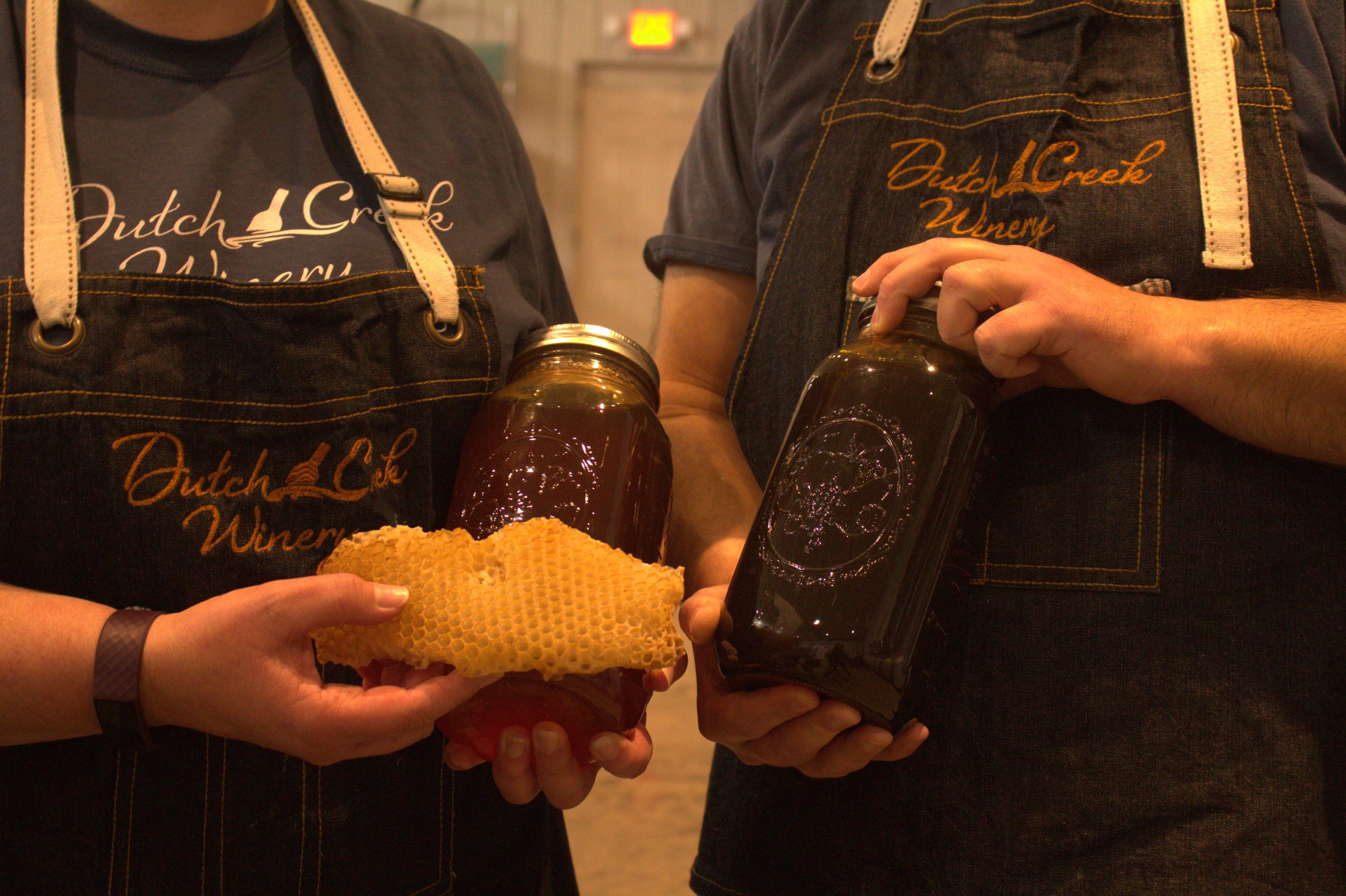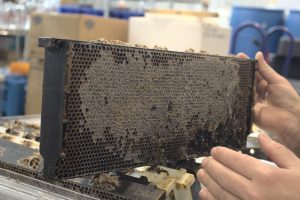
Paul and Cynthia Freedman, owners of Dutch Creek Winery, are building a space not only for tasting mead but for connecting with friends.
The owners of Dutch Creek Winery represent what it means to serve farm to table, or in their case, bee to bottle. Paul and Cynthia Freedman combine their love for crafts with a passion for bee keeping, bringing residents of Southeast Ohio honey wine, also known as mead.
Truly a dynamic duo, the couple handles everything from beehives to a fruit orchard to running a business. They are adding life to the northeast corner of Athens with their newest addition, a tasting room.
The Freedman’s
When Paul and Cynthia met in 2007, they discovered a mutual desire to move out to the country. After searching Ohio, they purchased 35 acres of land off Dutch Creek Road. This is where they began their journey of becoming fruit farmers, beekeepers, winemakers and business owners.
Soon after, the couple started making treats from scratch like maple syrup and sour dough bread. They even built their own beehives. Paul describes the activities as “the home crafts that you would expect any pioneer would.” They experimented with using their honey in ice cream, bread and one small batch of hard cider. They had more than they knew what to do with. In search for a product with an impressive shelf life, Paul wanted to try mead.
The Farm
Their venture into the wine world began when the Freedman’s made mead from home using only a few ingredients: honey, water and yeast. As their mead production took off, so did their farm, Wild Pear Farm. The two ventures were becoming impossible to handle as individual entities.
Wild Pear Farm sits upon the hillside above the winery and tasting room near the Freedman’s home on Dutch Creek Road. Their orchard grows an assortment of apples, pears and peaches and houses the beehives. Here, the perfect combination of fruit and honey works for expanding their business.
Yet Paul says they contemplated selling the farm, concluding that the farm needed a purpose to justify the cost.
“All of our friends decided that we weren’t going to sell the farm, we were going to sell the mead,” Paul says.
Paul wanted a professional opinion, however, and arranged for a mead tasting with chefs at Hocking College. After earning a thumb’s up, their small honey production room was on its way to becoming Dutch Creek Winery.
Niche Inside a Niche
The difference between fermenting traditional wine and mead is the presence, or lack of, grapes. And mead is made only with honey and water fermented by yeast.
“We are a niche market inside a niche market; we’re inside the wine world but we specialize in honey and fruit wines,” Paul says.
Today, Dutch Creek Winery sells its American Mead, a honey wine with only one flavor: wildflower honey. The winery also produces mead flavored by its own fruit as well as an assortment of others, like the Cherry Lime mead.
“We really wanted to come up with a product that could stand on its own and be grown in this climate,” Paul says.
It’s All About Patience
To Paul, other wineries that specialize in mead typically create very sweet, syrupy wines. These wines would be described more so as dessert wines, instead of the dinner wines typically made from grapes. Nevertheless, the Dutch Creek Winery owners want to compete with dinner wines. By creating a dry mead wine, that’s what they’ve done.
The difference in taste between a syrupy mead and a dry mead is determined by the duration of fermentation. If the fermentation process is stopped too soon, the wine is young, and it can be extremely bitter. To cover that mistake, other mead makers back-sweeten, or add extra sugar after fermentation.
“Sweetness can cover a lot of sins in wine,” Paul says. “If you have a wine that is moderate at best, you back-sweeten it, and it’ll taste a little better.”
Dutch Creek Winery lets its wine ferment anywhere from six months to a year. And while it’s more complicated to let fermentation stop on its own instead of cutting it off early, Paul says the flavor to speak for itself. Because every batch of mead from the winery contains honey from the hives, Paul and Cynthia can control the flavor of each bottle.
“We can really round out the flavors of honey. We want honey that is big, bold, and rich and we want a lighter, floral essence, so we mix those two. I wanted the nuances of flavor to come through,” Paul says.
“Meadtails” and other sweet treats
With an assortment of ingredients at their disposal and a knack for the science of fermentation, the Dutch Creek Winery owners are exploring flavor combinations. Cynthia says creating a dry mead “makes it easier to drink by itself and easier to pair with foods.”
“We encourage anyone who likes the wine to find new ways to enjoy it: cook with it, mix with it, try new foods paired with it,” Cynthia says.
One avenue the couple has explored is creating cocktails from their wine, or “meadtails.”
For those who wish to stick to non-alcoholic options, Dutch Creek Winery offers two flavors of soda, lavender lemon and mint ginger.
New to the scene is a food cart built by Paul and Cynthia, offering charcuterie boards, which are creative assortments of meat and cheese, bread bowls, hummus plates and soon, paninis and soup.
The food cart is open during all regular store hours and built to operate in both indoor and outdoor weather.
“When we went in they were really nice and willing to explain what everything was, as in what a mead was or what each flavor would taste like,” says customer John Pierron.
“I hadn’t had mead before so that built my first impression of it. They had a wide variety of flavors that were pretty exciting sounding.”
Pierron also noted the complimentary popcorn used as a palate cleanser in between each mead flight. And while Pierron enjoyed learning about the meads, he admits the hard cider was more suited for his preference.
All Boats Rise
The Freedman’s view the potential of the tasting room as a place where the community and fellow craftsmen people can gather, learn, create and celebrate.
“We would love to see the lower land host music festivals, renaissance festivals, art fairs, pottery, fabric, wood working. I’d love to see where we can bring out 30 to 40 vendors on weekend and have people come down. It wouldn’t just be us, it would be all the local craftsmen,” Paul says.
Cynthia cites the “all boats rise” theory, where everyone has a place in the community when they help each other.
“Part of this is not only for us, it’s to try to help the northeast corner of Athens develop a little economically and a little socially,” Paul says. “This is also trying to help the community grow and bring a little more tourism and a little more life.”

